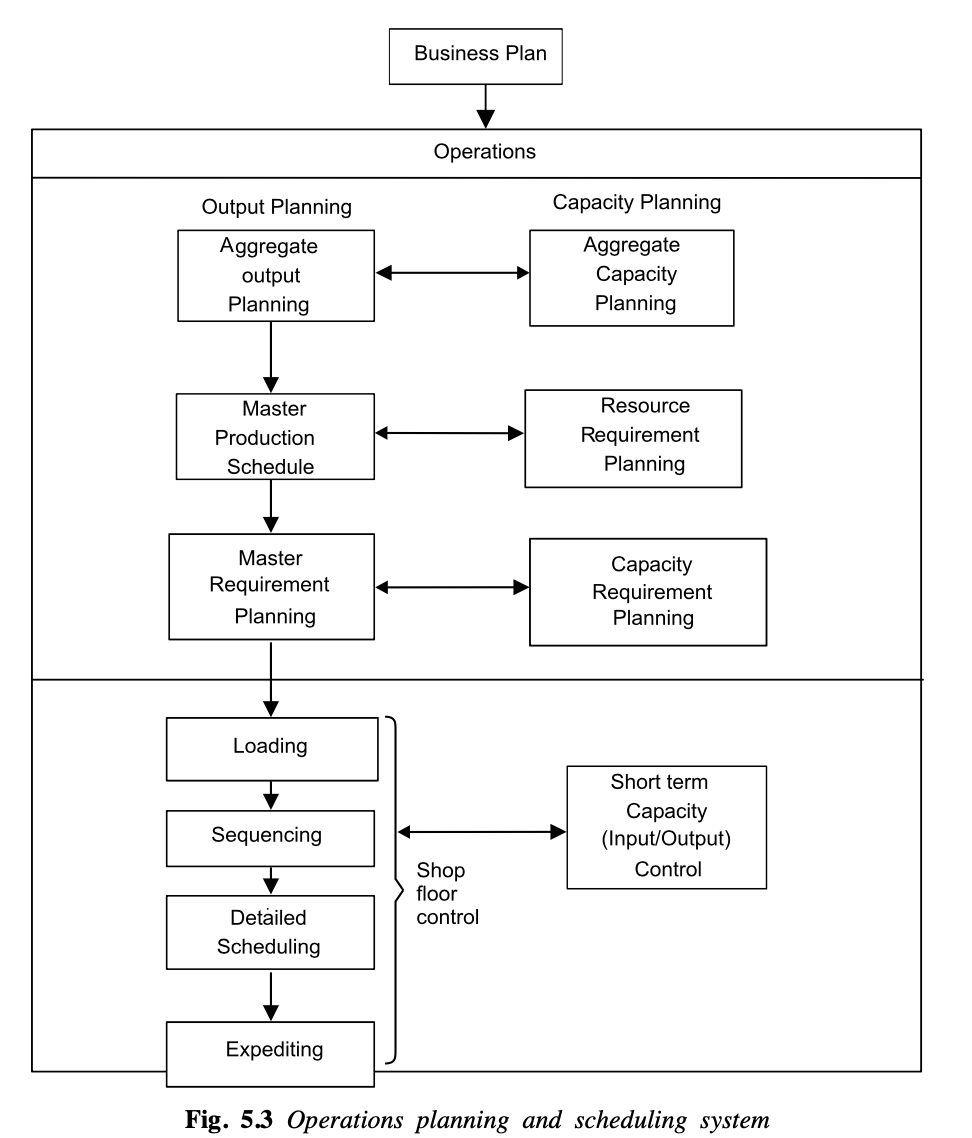Operations Planning and Scheduling Systems (Hierarchy)
Operations Planning and Scheduling Systems form a hierarchical framework that translates high-level business goals into detailed operational activities on the shop floor or in service delivery. These systems work at different levels of detail and across varying time horizons, ensuring alignment from strategic plans down to daily tasks.
The Planning Hierarchy:
-
Business Plan (Long-Range: ~1+ Year):
- Focus: Overall strategic direction, market share goals, profitability targets, major investments.
- Output: Statement of expected sales volumes for product families, overall inventory/backlog policies. Sets the stage for production requirements.
-
Aggregate Production Plan (APP) / Sales & Operations Planning (S&OP) (Intermediate-Range: 3-18 Months):
- Focus: Matching supply and demand for product families. Balances production rates, workforce levels, and inventory.
- Output: Planned production quantities for each product family per period (e.g., monthly). Driven by the Business Plan and demand forecasts.
-
Master Production Schedule (MPS) (Short to Intermediate-Range: Weeks to Months):
- Focus: Disaggregating the APP into specific end products. Determines exactly how many of each specific item will be produced and when (typically weekly).
- Output: Detailed build schedule for finished goods. Drives Material Requirements Planning.
-
Material Requirements Planning (MRP) (Short-Range: Weeks):
- Focus: Calculating the exact quantities and timing of raw materials, components, and subassemblies needed to support the MPS. Manages dependent demand items.
- Output: Planned order releases for purchasing and internal production of components.
-
Capacity Planning (Multiple Levels):
- Resource Requirement Planning (RRP) / Rough-Cut Capacity Planning (RCCP): (Linked to MPS) Checks feasibility of MPS against critical resources.
- Capacity Requirements Planning (CRP): (Linked to MRP) Checks feasibility of planned orders against capacity at all work centers. More detailed.
- Input/Output Control: (Shortest Range) Monitors actual capacity usage versus plan at work centers.
-
Shop Floor Control / Execution Systems (Short-Range: Days/Shifts):
- Focus: Managing the actual execution of work on the factory floor.
-
Activities:
- Loading: Assigning jobs to machines.
- Sequencing: Prioritizing jobs at workstations.
- Detailed Scheduling: Setting specific start/finish times.
- Dispatching: Releasing work orders.
- Monitoring & Expediting: Tracking progress and addressing issues.
Key Characteristics of the Hierarchy:
- Time Horizon: Decreases from long-range (Business Plan) to short-range (Shop Floor Control).
- Level of Detail: Increases from broad product families (APP) to specific components and operations (MRP, Shop Floor Control).
- Integration: Each level provides input and constraints for the level below it, ensuring alignment with overall business strategy. Feedback also flows upwards to adjust higher-level plans if needed.
Indian Example: Consider Hindustan Unilever Limited (HUL). Their Business Plan sets overall growth and profit targets. S&OP/APP determines monthly production volumes for categories like soaps or detergents. The MPS specifies weekly production quantities for specific brands like Lux or Surf Excel. MRP calculates requirements for chemicals, packaging materials, etc., for these brands. CRP checks capacity at mixing plants and packaging lines. Shop Floor Control manages the daily execution on the production lines. This hierarchical system allows HUL to manage its vast and complex operations across India.
This structured approach ensures that day-to-day operational decisions are consistent with intermediate plans and long-term strategic objectives.


No Comments